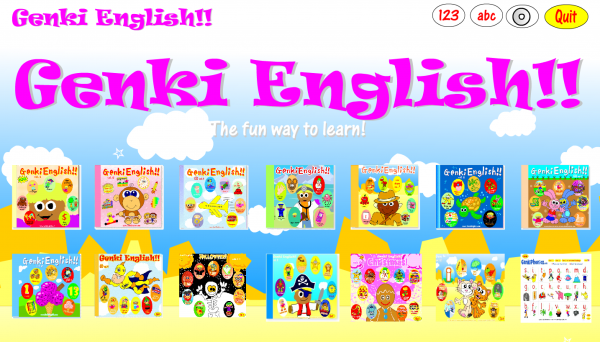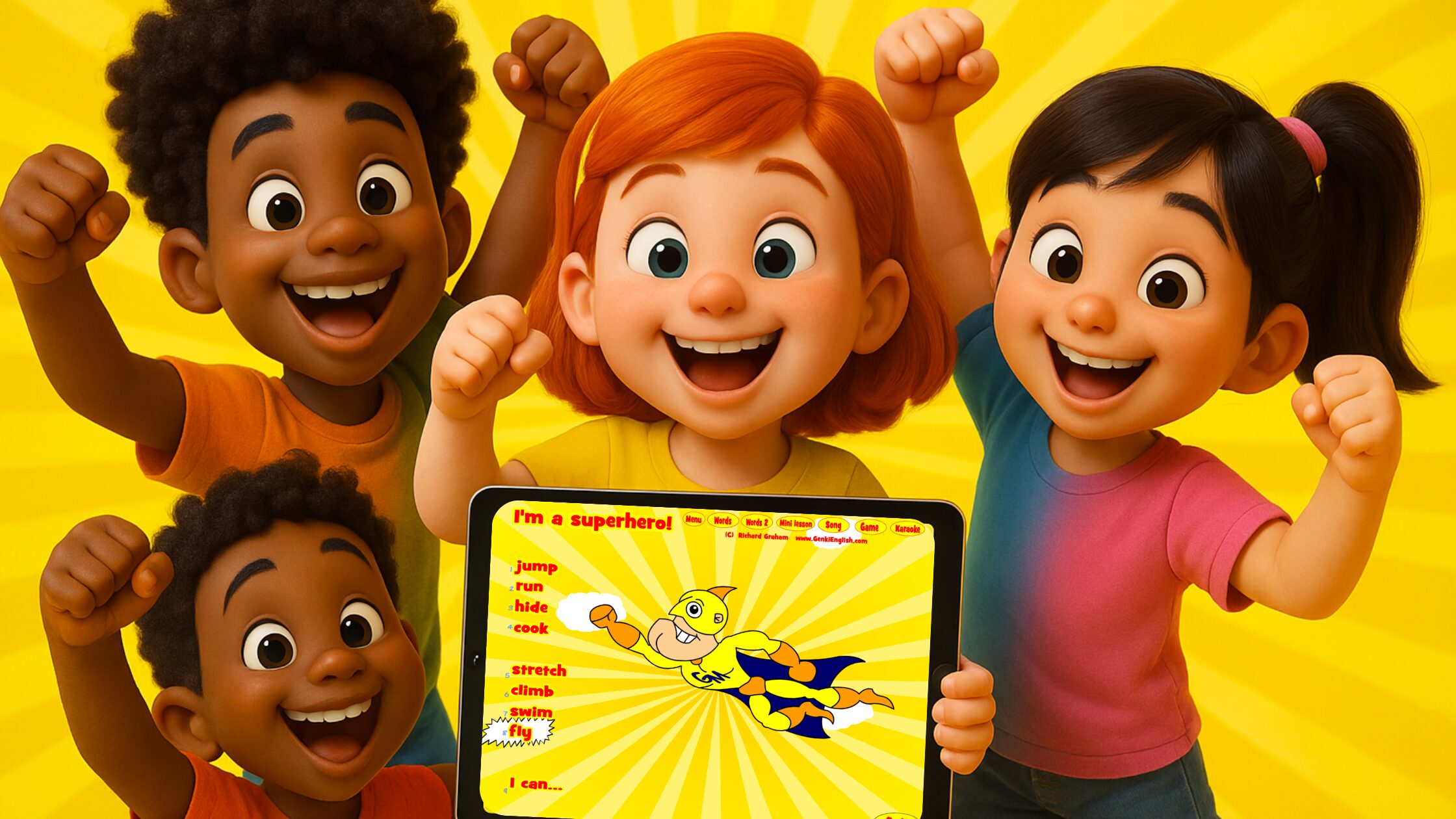Here’s another game from Mido Farid, this time to go with the “How many?” lesson. Mido’s hopefully going to have some videos for you soon too!
The “Magic Matchbox” Game
This is a guessing game played by teams to practice numbers.
* Exponent: How many? There are…
* Additional benefits: genuine communication; hidden drilling; teamwork
* Language needed: numbers 1 to 11
* Time: 10 to 15 minutes
* Material:1 matchbox; 11 toothpicks per personPreparation
1. The teacher challenges the students to count the 11 toothpicks in his/her
hand. To model the game, the teacher then puts some into the matchbox, shakes it
and asks the students to guess how many are inside.2. The teacher explains how to play the game in the student’s native language
if necessary.3. The teacher divides the class into two teams, giving each team an English
name e.g. the Roosters and the Monkeys. Then the teacher writes the team names
on the board (or puts up a picture card) for scoring during the game.4. If the class has a large number of students, choose 10 players from each team by chanting together a ‘choosing rhyme’ such as the following:
* One, two, three, four,
* O-U-T, OUT!
* (The student chosen is the one you are pointing at on the word OUT!)The Game
1. Each player secretly puts no more than 11 toothpicks into his/her matchbox
2. The first player from the Roosters stands up, shakes the matchbox in his/her hand. His/her team members shout together ‘How many?’ The Monkeys then give the answer by replying ‘There are…’
3. If the guess is the correct number, the Monkeys wins a point. If not, the Roosters get the point.
4. Then switch roles. This time the Monkeys ask and the Roosters guess.
5. The game continues until all the players get a turn.
6. The teacher keeps a record of the points on the board. The team with the
most points wins.
I think this is a great teamwork activity with really simple, but real , English!
What do you think?



I think, this game is interesting and safe for elementary students who fully understood the real purpose of a toothpick. I hope your students are behave enough to handle the said stuff. Alow me to share to you what I have done in my younger students ages 3, 4, 5, 6 teahing the GE 1-11 numbers. Instead of using some toothpicks you can use plastic tiny candles or rainbow -chips laid on the floor 100 pcs. to be scoped with a big wooden spoon of course with the beat of the GE number music and the kids shouted the number and go with the rythm of the music while scoping the chips and putting it on their individual plastic boxes and shakes it for additional noise while uttering the number 1-10 please hide the last one (11) and let the students guess what next number?
Or use plastic balls that rolls and the students will ran after the balls and pick it up and shout the number while putting the object into their basket with the BGM GE music number and the students keep moving and running to the beat of the music. the one who gathered the 1-10 balls as fast as possible will be the winner throw the one ball again infront and let the students shout in unison 11 repeat again and again, well, it works with my small class. I hope you’ll try mine too.
I’ve used a different version of this game with older kids to practice numbers to 100, using large items (eg. books, sheets, etc) to mean 10 and smaller items (erasers, small sharpeners) to mean 1.
One kid gets to put the items on the table (eg. 3 large and 7 small), and asks “how many things are there (on the table)” and the other kids try to get the correct sentence “there are 37 things (on the table)”. The winner gets to make the next number.
It’s easier to do than to explain actually and kids have a lot of fun trying to make difficult numbers for their classmates!
Hi Sussie,
I like your ideas too. I am going to try that.
hi teachers
what do u think of my games?
if u like i hope to see ur comments
wait for more games
mido
hi teachers
i hope any one read my games leave a comment
coz i still have lots of ideas im going to send them to genkienglish
hope to hear from u soon
mido
I like your ideas thanks
I do a version of this that is a big hit with the kids. It’s a good idea but like someone else said I think toothpicks may be a bad idea for really young kids.
I give 3 for exact guesses and one point for getting within 1 of the correct answer.
Most of my students understand addition and subraction already, so I throw this into the mix when I’m teaching the numbers. With everyone in a circle, someone will say, “Six minus one is…” and the person who is “five” must respond, “Five!” Then, this player will announce another equation, sending the game to another player. Everyone must listen, calculate, evaluate, and respond when required. After half the players have “fouled”, reassign the numbers in the group and play again. Players who send the game to themselves or to an unassigned number (e.g. 17) by mistake, must wear the Silly Hat until another player does the same thing.
Great to share idea here! Every idea is cool to try and see how it works. At my school students love to play with marbles, maybe I’d to try with those.
Be Genki!
Jam
I am teaching very young learners now, so toothpicks are definately not an option. I played the same game with a large oatmeal tin and some plastic playing chips and it worked fine.
Here are some other activities we did with the ‘How many? song:
1. I spread out playing cards on the floor and called out a number. The kids had to pick up that number of playing cards. They could only use one hand though. That made it fun!
2. I put the kids into partners and they had to pick up a certain number of the plastic playing chips. Only, I put them back to back so they couldn’t see each other. I called out a number and they picked up as many chips as they wanted. Then, they added the number of chips together with their partner. If no pair got the exact number I called out, we got to discuss who was closest.
3. This is my all time favorite activity for teaching anything. The kids made themed questionnaires. Of course, for the ‘How many?’ song all the questions had to be ‘How many?’ questions. The kids came up with ‘How many rooms in your house?’ because we had done, ‘Where is baby monkey?’ and ‘How many fish in the sea?’ because we had done ‘Under the Sea.’ We did the questionnaire collaboratively and then I printed it out for the kids to take home and share with their parents. They were so excited. For older kids, they could be assigned to write their own questionnaires.
Loving Genki English!
A fun and interesting way to learn. It’s ineractive and requires team effort. Great idea Richard.
Hi! We count pages of the book. I take a book and say “How many pages?”
More – Less or Yes!